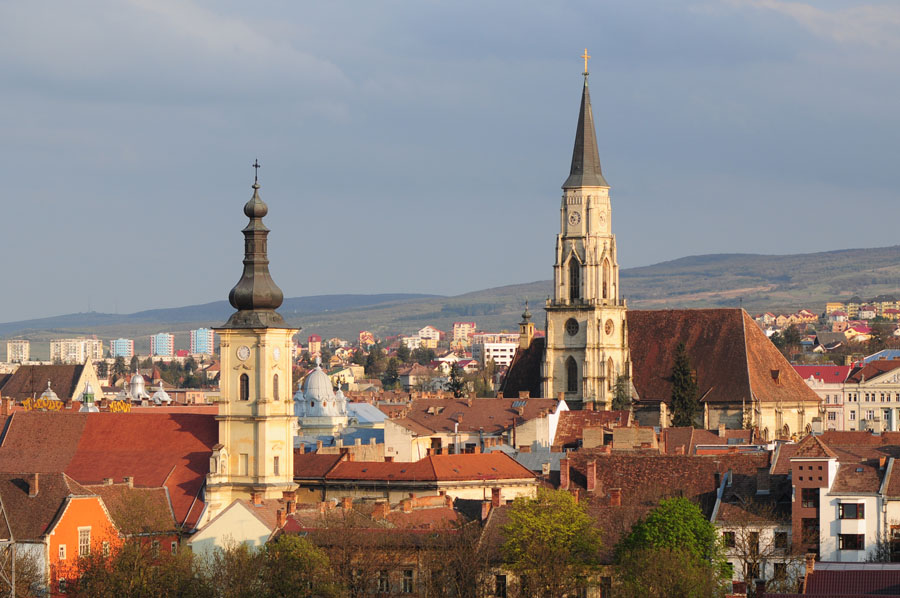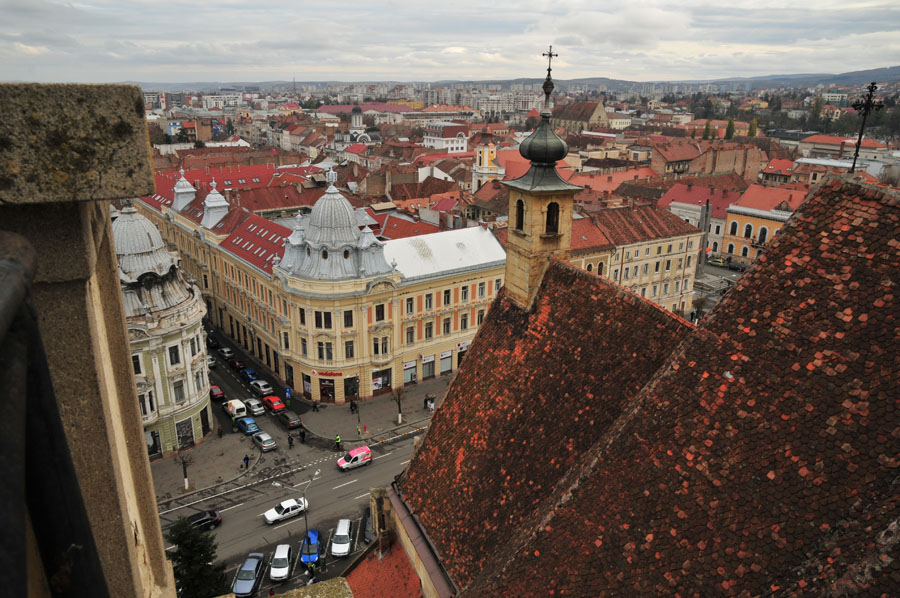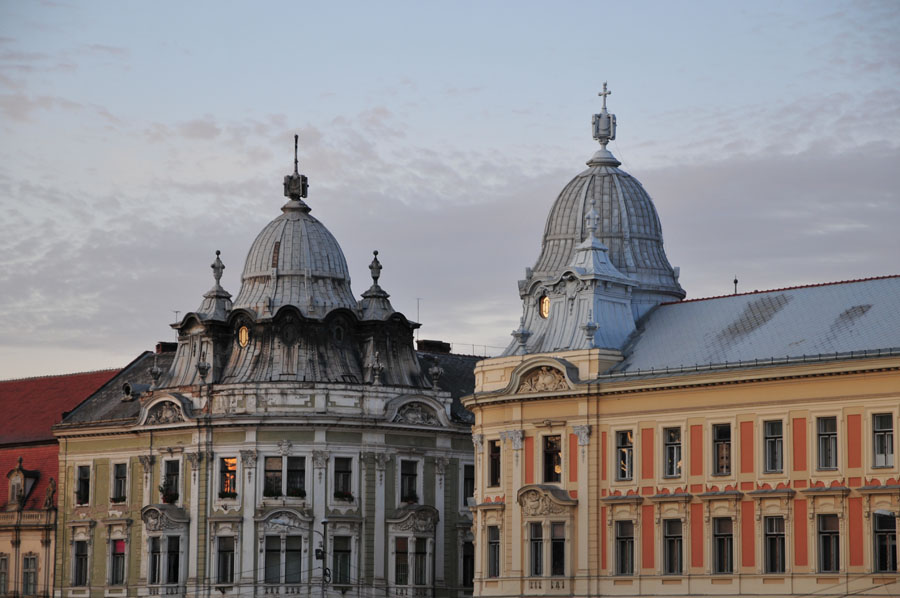| The short story of Cluj-Napoca |
|
Beginnings In 271 after Christ Dacia was evacuated due to Goth-Sarmatian pressure. This was a big setback for the development of the city. Probably, there were only a few people who undertook the Goth slavery. The people who settled down after the Roman pullout, could not do with the remaining buildings or their ruins. Despite the efforts of the devotees efforts, the historical continuance is confuted by the findings. The ancient capital of Dacia Porolissensis, Cluj –Napoca was recorded for the first time by the Greek geographer Claudius Ptolemy (AD 85 - 165) some two thousands of years ago. It was elevated to municipality during the reign of the Emperor Hadrian (AD 117 – 138) under the name of Municipium Aelium Hadrianum Napoca and later to colony, around AD 180 under Marcus Aurelius or under Commodus. The Colony Aurelia Napoca had institutions, a local senate, magistrates, a people's assembly, in other words, the status of any other city in the Roman Empire. The first documentary record of the city goes back to 1173 and refers to the settlement as Clus (in Latin "surrounded by hills"). Other names it had were Kolozsvar (in Hungarian) and Klausenburg (in German); the latter was given after the Saxon colonists who settled in the City of Cluj in the time of Stephen V of Hungary, subsequent to the Tatar attacks which decimated the autochthonous population. Klausenburg was one of the seven medieval Saxon cities (Siebenburgen) in Transylvania. Its first Romanian name was Clus, often written Klus, and in 1974 it was changed to Cluj-Napoca. The ideal geographic position of the city, situated at the crossroads that linked East, Central and South Europe, determined its specific features, that is, ethnocultural pluralism and material development. Although the city underwent a strong decline because of the barbarian invasions following the Aurelian withdrawal in 271, in the Middle Ages it had a flourishing civilization and accumulated economic, artistic and cultural values which led to its being assigned and consolidating a super-status, that of "treasure-city", not very common among the cities at that time. In 1316 the king Charles of Anjou granted it a series of privileges which conferred the city the status of royal city (free city); among those privileges the most important were the right to have its own administration, the right to judge, free trade, the right to built churches and cemeteries etc. In 1405 king Sigismund of Luxembourg granted it new privileges, including the right to extend its fortifications. The city also benefited from the special protection of another great king, Mathias Corvinus (1458 – 1490), born in Cluj. It was during his reign that some of the most representative monuments of the city were started, completed or restored: St. Michael's Church, terminated around 1480 and the Tailor's Tower, erected around 1475, which completed the city's fortifications. The most important religious monument in the time of Mathias was the church of the Franciscans minor (currently protestant) on Strada Lupilor (today M. Kogalniceanu); its construction, started in 1486, was due to a generous royal donation. The first fortified enclosure of the medieval city was erected subsequent to the Tatar invasion and to royal document issued in 1316 and encompassed 7, having in the center what we call today Piața Muzeului (The Museum Square). The tower, located in the south-eastern corner of the city, called the Stonemason' s Tower after the guild that administrated it, also served as a jail. The second fortified enclosure was by far larger and had 42 ha inside its walls. In the 16th century there were 18 bastions and towers at the corners of the city, at the gates or intermediately: The Bridge Tower, The Monastery Tower, and The Tailor's Tower. Cluj was described by humanist authors as "a big and rich commercial city, strongly built, having powerful and ancient walls and numerous towers (Giovandrea Gromo). Between 1713 and 1716 the Austrians built on Dealul Cetatuia (The Fortress Hill) a garrison, using the Vauban system. Here in 1849 Stephan Ludwig Roth, Saxon intellectual, historian and participant in the Revolution of 1848 was executed by Hungarian authorities. Cetatuia (The Fortress) has been declared historical monument; it offers the visitors a great view of the city. During the dualist Austro-Hungarian period Cluj experienced a significant urban development, benefiting greatly from western influences, despite the fact that the political effects of the regime were negative. The Romanian people's attempt to achieve national affirmation reached the apogee during the Revolution of 1848 and when the Memorandum was drafted and became reality once Transylvania and Romania were unified.
Cluj – the treasure city is therefore an urban republic, a homeland for its inhabitants, a city where the organization of local administration, the proper distribution of taxes, the public order and urban development were, most of the time, more important than European events or princes' politics. Although Cluj citizens spoke different languages, they knew how to live together in harmony, to mutually accept and respect the values of a city which always hosted different ethnics, religions and social classes. For these reasons, the most valuable and sustainable richness of the treasure city is that remarkable art of living together. |



 Today the Municipality of Cluj-Napoca is the seat of Cluj County and the spiritual and economic capital of Transylvania as well as an influential academic and medical centre; the heart of multiculturalism and diversity, Cluj is the city where the past, the present and the future forged the identity and local specifics. In the Protocols of the XVIth century, kept almost entirely at Directia Judeteana Cluj a Arhivelor Nationale (the National Archives of Cluj county), the citizen of Cluj is proudly referred to as a person who loves their homeland and the Republic is the utmost principle entire city, for which we have a duty to die, to which we must offer and devote all we have.
Today the Municipality of Cluj-Napoca is the seat of Cluj County and the spiritual and economic capital of Transylvania as well as an influential academic and medical centre; the heart of multiculturalism and diversity, Cluj is the city where the past, the present and the future forged the identity and local specifics. In the Protocols of the XVIth century, kept almost entirely at Directia Judeteana Cluj a Arhivelor Nationale (the National Archives of Cluj county), the citizen of Cluj is proudly referred to as a person who loves their homeland and the Republic is the utmost principle entire city, for which we have a duty to die, to which we must offer and devote all we have.



